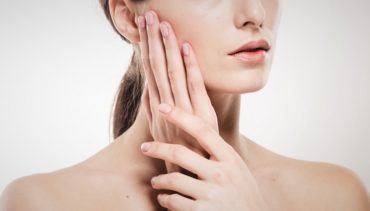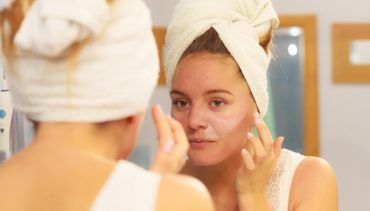
What is the difference between melasma & sun/age spots?
Returned from holidays and noticed brown or even grey discoloration around your face or neck?
Is it sun/age spots or perhaps Melasma?
What are the common denominators in both? Overactive pigment cells and sun exposure without sufficient protection.
Melasma
What is it?
Also called chloasma or pregnancy mask. Melasma is a type of hyperpigmentation caused by UV exposure that affects mostly women during pregnancy, oral contraceptive use, or other hormonal therapies.
What does it look like?
It looks like blotchy hyperpigmented patches on the face, usually the bridge of the nose, the cheeks, forehead, chin, and upper lip.
Less frequently, it can also appear on other areas that are exposed to the sun, such as the neck and forearms.
Who gets it?
90% of people with melasma are women in their reproductive years.
Women with darker skin are more prone to melasma.
How to treat
Melasma gets worse in the summer and better in the winter.
Treatment of chloasma is more challenging compared to a typical hyperpigmentation.
From laser treatments to brightening agents like vitamin C or whitening day and night creams for melasma, are all possible treatments, often combined for better results.
Pregnant women, should advise their gynecologist first, before beginning any treatment.
Of course, you cannot have any hyperpigmentation treatment (or prevention), without the use of very high protection sunscreen, every day of the year.
How does it differ from sun spots?
The main difference between any other form of hyperpigmentation and melasma is the hormonal influences.
Sun & Age/liver spots
What is it?
Sun spots are small dark areas on your skin triggered by sun exposure without proper protection. Combined with age, are also called age or liver spots.
what it looks like?
They could be flat, oval-shaped areas of increased pigmentation of tan or brown color.
Who gets it?
People with light skin and red hair or individuals who have experienced multiple sunburns in the past, are more prone to get spots.
How to treat?
Liver spots are harmless most of the time, however people often seek treatment for aesthetic reasons.
Chemical peels or a specialized cream that exfoliates before whitening treatment, is the first step to treat hyperpigmentation.
Then, a consistent use of a whitening treatment for at least three months is essential for you to observe results.
How they differ?
Sun spots are often seen in adults after 30 and age spots are the ones noticed after the age of 50. Age spots occur more often on the top of the hands and feet and upper backs, where sun exposure has accumulated over the years.








